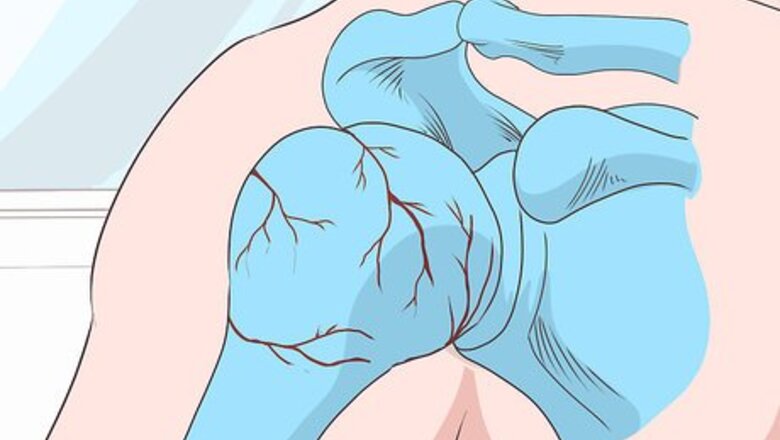
views
X
Research source
Before you splint, or immobilize, the broken humerus bone it's important to identify the location of the break. Splinting the area correctly can help prevent further damage and reduce pain while you wait for trained medical help.[2]
X
Trustworthy Source
PubMed Central
Journal archive from the U.S. National Institutes of Health
Go to source
Identifying the Location of the Fracture
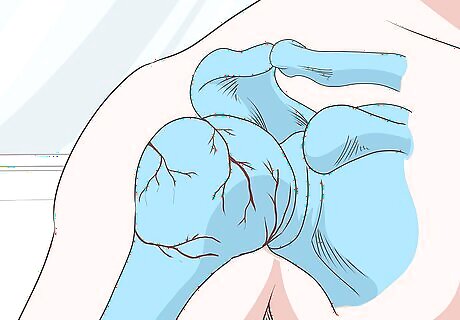
Identify a proximal humerus fracture. This type of injury can cause damage to the ball and socket (glenohumeral) joint where the humerus bone attaches to the shoulder girdle. A fracture in this location causes difficulty with shoulder movement, such as trying to raise the arm overhead. Palpate (touch) the upper arm and feel for any bumps, lumps or evidence of broken skin. Carefully remove or alter clothing so you can see the entire arm and look for signs of bruising, inflammation or deformity. During the examination, have the patient and/or bystanders support the rest of the injured arm to reduce discomfort. You can usually tell the location of the break based on where most of the pain is coming from. Broken bone pain is often described as severe, sharp and shooting. If part of the humerus is poking through the skin of the upper arm (known as an open compound fracture) then the person will need immediate medical attention to stop the bleeding and prevent infection. Be very careful splinting this type of fracture due to risks of damaging blood vessels and nerves.
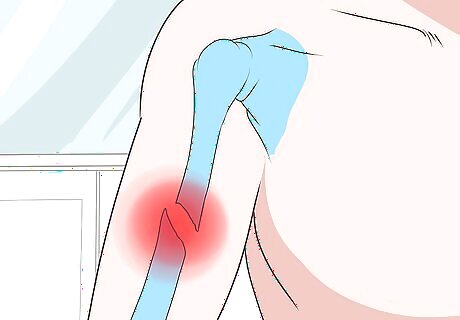
Recognize a mid area fracture. This type of break, called a diaphyseal fracture, occurs somewhere in the middle of the humerus bone. There is usually no shoulder joint or elbow joint damage with this type of fracture; however, movement distal from the break (at the elbow or in the forearm) may be reduced and painful. Breaks in this area are often caused by trauma from car accidents or from getting hit with a blunt object such as a baseball bat. Again, you'll need to look at the upper arm and feel around to determine where the fracture is. Common signs and symptoms of bone fractures include: intense pain, a visibly deformed or misshapen bone or joint, swelling, near immediate bruising, nausea, reduced mobility, and numbness or tingling in the affected limb. If the wrist and hand are weak or cannot grip anything without causing serious pain, the mid-shaft fracture may also have caused nerve damage or irritation. In this case, immediate medical attention is required.
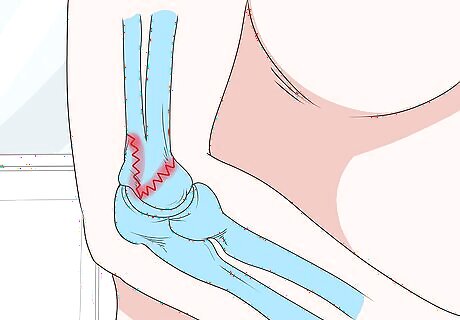
Determine if the break is a distal humerus fracture. This injury occurs closer to the elbow joint and often requires surgical repair. Distal humerus fractures are more common in young children (typically from falls or being pulled by the hand too hard), but can occur in people at any age from accidental or violent arm trauma. Distal humerus fractures obviously affect elbow function the most, but hand and wrist movements can be affected also. This type of fracture often causes damage to the radial artery and median nerve of the lower arm, which can cause numbness and/or tingling in the hand. If a broken bone is considered complicated — multiple fragments, the skin is penetrated by the bone and/or the pieces are grossly misaligned — then surgery is a likely outcome regardless if you splint the bone or not.
Splinting the Fracture
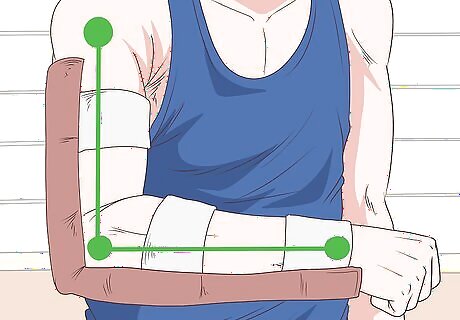
Understand the purpose of splinting a fracture. Once you've identified where the humeral fracture is, then it's time to splint it. Before you start, make sure to understand the purpose of splinting. The main purpose is to hold still and protect the broken arm from further damage until medical help arrives. As such, it's just a temporary measure in an emergency situation. If you are overwhelmed, scared or confused as to what to do in the face of such an emergency situation, then focus more on calming the injured person down and telling him to keep his arm still instead of trying to splint it. There's no shame in that. Call for emergency assistance as soon as you realize a person is significantly injured, regardless of where the fracture is or what type it is. If you don't have a phone, borrow the injured person's or ask a bystander to dial 9-1-1.
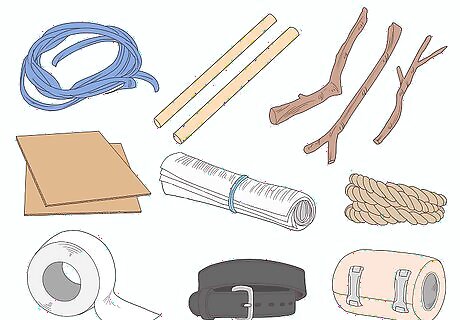
Prepare your materials. In an emergency situation, you won't likely have ideal materials to make a sturdy splint, but do your best to improvise. The important thing is to use something rigid and sturdy to support the whole arm down its entire length. Remember, the elbow and rest of arm must be supported. Long pieces of plastic, wooden sticks, tree branches, thick cardboard, rolled up newspaper and similar items all can be used to make a splint. The best options are materials that can be cambered (bent to the shape and curve of the arm), like folded newspaper or thick cardboard. You also need something to secure the splint, such as an elastic bandage, medical tape, belt, shoelaces, rope or strips of cloth. Try to ensure that the materials are relatively clean, especially if you're applying them to an arm that is bleeding. If you are using something with sharp edges or splinters, then wrap it with cloth or plastic before applying it to the arm as a splint. If you can trim the splint, then size it the length of the entire arm, from the shoulder joint to the mid joints of the fingers. Take two or three layers of cardboard or paper and make an "L" shaped splint that is curved to the shape of the arm. Measure and adjust the length of the bend/ size of forearm to fingertip area and camber on the uninjured limb. (Remember to reverse the camber, however; it is going on the opposite arm.) Hypoallergenic medical tape is ideal to wrap a splint, but avoid applying duct tape against a person's skin if you can due to the likelihood of irritation. If you must use duct tape, place cloth or paper towel between it and the skin.
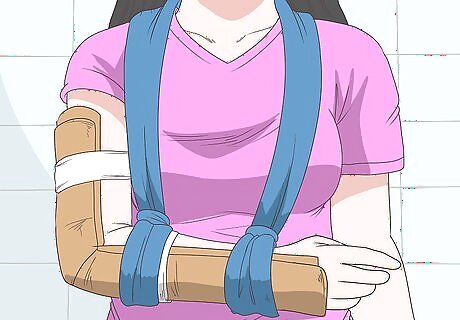
Apply the splint and fasten it. Under ideal conditions and with the correct materials and knowledge, you wouldn't need to secure the elbow with a proximal humeral fracture near the shoulder. However, in an emergency situation, try to splint as much of the upper arm bone as possible until medical help arrives. Place the splint gently under the injured arm. If it needs adjusting, do so off of the fracture, then replace and check. Have the patient hold the splint in place while you bandage above the site. Continue below the injury site and bandage to the hand; add a bit of rolled up cloth/roll of gauze under the hand to help keep the fingers in neutral position. This keeps the fingers' muscles and tendons from moving the arm/fracture. Avoid placing the tape / bandage / ties directly over the fracture site. You will need them above and below the fracture site and one to secure the lower arm to the splint. Ideally, you will want to bandage the entire splint to the arm. Otherwise, tie the bandages as firmly as you can without cutting off circulation. Do not attempt to bandage open fractures tightly, as this can cause bone fragments to injure soft tissue. Merely cover the open wound and secure the bandage gently; if it is bleeding freely, some soft compression using a bandage or tie may be necessary to stem the bloodflow, but always be mindful of the patient's response or any grinding sensations you feel as you bandage.
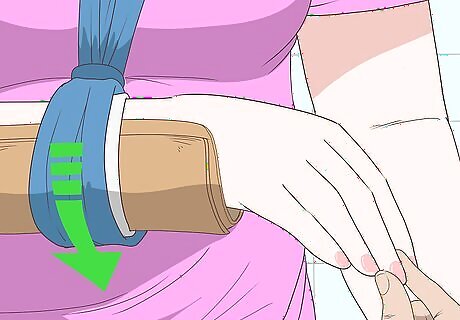
Check the person's circulation. Regardless of the kind of fracture that was sustained, you must check to make sure that the secured splint is not too tight and cutting off the person's circulation. Observe the person's hand (on the side of the injury) for changes of color. If the skin turns a bluish color, immediately loosen the bindings of the splint. In addition, check the patient's radial (wrist) pulse after splinting to ensure it is still present. Another way of checking for normal circulation is to pinch a fingernail on the hand of the injured arm for about two seconds and see if it quickly returns to its normal pinkish color. If it does, the circulation is fine; if it remains white and doesn't turn pink, loosen the binding. Since the injury is swelling and possibly bleeding under the skin, continue to check for normal circulation every few minutes until medical help arrives.
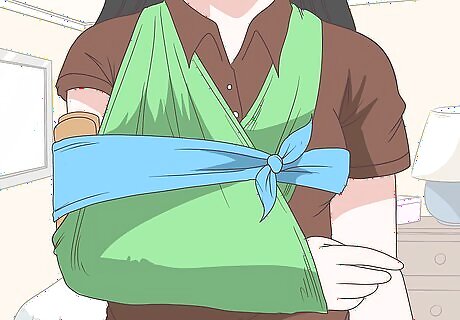
Make a sling. Once the arm is splinted, tie a sling around the splint. Be certain you attach another bandage/tie around the sling and torso — this second bandage (transverse bandage) keeps the arm immobile, using the torso as a support. If you have a large, square piece of cloth (about 1 meter on all sides), this will work perfectly for a sling. If you have an old pillowcase or sheet, you can cut or even tear it to the appropriate size. Fold the square in half, into the shape of a triangle. Slip one end of the cloth under the injured arm and the other end over the opposite shoulder. Bring the free end of the cloth up over the person's other shoulder (the shoulder of the injured arm) and tie it to the other end behind the person's neck.












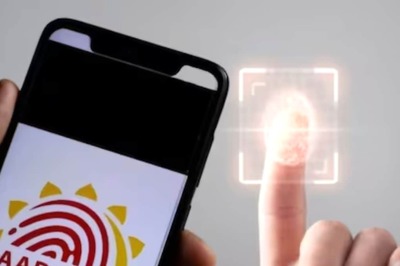





Comments
0 comment